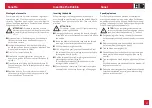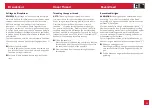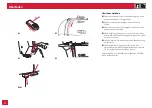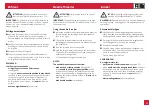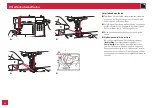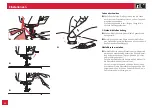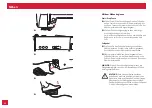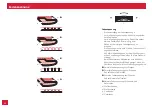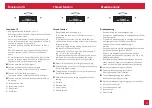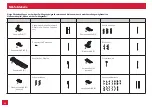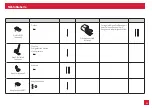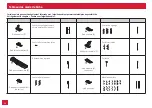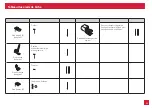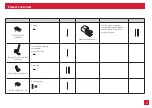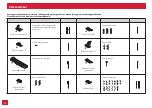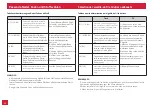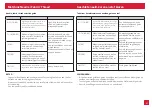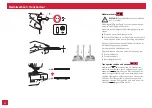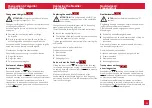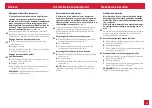
51
Draadspanning
– Basisinstelling van de draadspanning: 4
– Draai om de draadspanning te verhogen het wiel naar
een hoger getal.
– Draai om de draadspanning te verlagen het wiel naar
een lager getal. Het is belangrijk om bij het
naaien met de juiste draadspanning te
werken.
– De spanning moet worden aangepast afhankelijk van
het soort steek, het garen en de stof.
– 90% van alle naaiwerkzaamheden kan worden
uitgevoerd met een spanning tussen 3 en 5 (4 is de
standaardinstelling).
– Bij alle decoratieve naaiwerkzaamheden wordt de
steek mooier en plooit de stof minder als de boven-
draad iets naar de linker stofkant wordt getrokken.
Normale draadspanning voor stikken.
Te weinig draadspanning voor stikken.
Wiel op een hoger cijfer instellen.
Te veel draadspanning voor stikken.
Wiel op een lager cijfer instellen.
Normale draadspanning voor zigzag- en siersteken.
a) Voorkant van de stof
b) Achterkant van de stof
c) Bovendraad
d) Onderdraad
Thread tension
– Basic thread tension setting is „4“.
– To increase the tension, turn the dial to the next
number up.
– To decrease the tension, turn the dial to the next
number down. Proper setting of tension is important
for good sewing.
– There is no single tension setting appropriate for all
the stitch functions and fabrics.
– However, 90 % of all sewing will be between the „3“
and „5“ („4“ is the basic setting).
– For decorative sewing you will always obtain a nicer
stitch and less fabric puckering when the upper
thread appears on the bottom side of your fabric.
Normal thread tension for straight stitch sewing.
Thread tension is too loose for straight stitch sewing.
Turn dial to higher number.
Thread tension is too tight for straight stitch sewing.
Turn dial to lower number.
Normal thread tension for zig zag and decorative
sewing.
a) Surface
b) Reverse side
c) Upper thread
d) Bobbin thread
Tension du fil
– Réglage de base de la tension du fil : 4
– Pour augmenter la tension, tournez le bouton dentelé
sur un chiffre plus élevé.
– Pour diminuer la tension, tournez le bouton dentelé
sur un chiffre moins élevé. Il est important d’utiliser la
tension correcte du fil pour coudre.
– La tension doit être adaptée selon le point, le fil et le
tissu.
– 90% des travaux de couture peuvent être effectués
avec une tension entre 3 et 5 (4 est la tension de
base).
– En cas de travaux de couture décoratifs, le point sera
plus joli et le tissu mieux travaillé si le fil supérieur est
légèrement tiré sur le côté gauche du tissu.
Tension normale du fil pour piquer.
Tension du fil pas assez forte pour piquer.
Tournez le bouton dentelé sur un chiffre supérieur.
Tension du fil trop forte pour piquer.
Tournez le bouton dentelé sur un chiffre inférieur.
Tension normale du fil pour des points décoratifs ou
en zigzag.
a) face avant du tissu
b) face arrière du tissu
c) fil supérieur
d) fil inférieur
Tension du fil
Thread tension
Draadspanning

